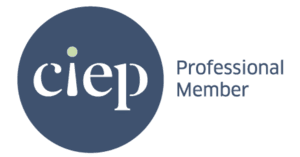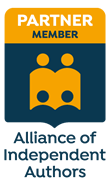Research objectives are specific, actionable goals that guide academic research by defining what the study aims to achieve. They help structure the research process and ensure clarity, direction, scope and evaluative benchmarks. Effective research objectives are typically SMART — specific, measurable, achievable, relevant and time-bound.
This blog post discusses the role and formulation of research objectives in academic writing. It explains their function, types and characteristics, differentiates them from research aims and outlines where they are typically placed in academic documents. In addition, this post offers guidance on how to write effective research objectives and highlights the value of professional editing in preparing texts for publication.
List of contents
- What are research objectives?
- Research objectives vs research aims
- Golden thread
- SMART research objectives
- Where in academic texts are research objectives placed?
- How to write research objectives?
- Examples of research objectives
- Editing services
- Resources
Key takeaways
- Research objectives define what a study seeks to achieve and provide clarity, direction, scope and evaluation.
- There are 3 main types: exploratory, descriptive and causal.
- Effective objectives are clear, specific, feasible, relevant and measurable.
- Research aims express the broad goal, while objectives break it into actionable steps.
- SMART (specific, measurable, achievable, relevant and time-bound) research objectives improve structure, clarity and feasibility.
- Objectives typically appear early sections of academic texts, including proposals, theses and journal articles.
- Writing strong objectives involves defining the problem, using action verbs and checking alignment with the research aim.
What are research objectives?
Research objectives are clear, concise goals that guide a study. They define what the researcher aims to achieve and help maintain focus throughout the research process. By setting specific targets, research objectives ensure the study remains structured and relevant.
Function
Research objectives serve several 4 functions — they provide clarity, direction, scope and evaluation of research.
- Direction: They provide a roadmap for the research, outlining what needs to be explored or tested.
- Clarity: They clarify the purpose of the study for both researchers and readers.
- Scope: They help delimit the research area, preventing scope creep.
- Evaluation: They offer benchmarks to assess the success or relevance of the research outcomes.
Types
Research objectives fall into 3 main categories: exploratory, descriptive and casual. Exploratory objectives help define problems, descriptive objectives provide detailed information and causal objectives explain relationships.
- Exploratory objectives aim to investigate a problem or phenomenon where limited information exists. Researchers use them to gain insights, identify patterns or generate hypotheses. For example, a study might explore emerging consumer behaviours in a new market segment.
- Descriptive objectives focus on detailing characteristics, functions or relationships within a subject area. They answer questions such as who, what, when or where. For instance, a researcher may describe demographic trends among urban commuters.
- Causal objectives seek to determine cause-and-effect relationships between variables. They test hypotheses to understand how one factor influences another. For example, a study might examine whether a new teaching method improves student performance.
Characteristics
In summary, research objectives provide structure, ensure relevance and support evaluation. Without them, research risks becoming unfocused and unproductive.
To be useful, research objectives must have the following characteristics:
- Clear: Avoid vague or ambiguous language.
- Specific: Focus on precise aspects of the research topic.
- Feasible: Ensure the objectives are achievable within the available time and resources.
- Relevant: Align them with the research problem or question.
- Measurable: Make it possible to assess progress and results.
What is the difference between research objectives and research aims?
Research aims and research objectives are closely related, but they serve different purposes in a study.
Research aims describe the overall purpose or central goal of the research. They are broad, general and conceptual. A research aim outlines what the researcher hopes to achieve in the long term. For example, ‘To understand the impact of digital media on adolescent identity.’
Research objectives, on the other hand, break the aim into specific, actionable steps. They are concrete, focused and measurable. For instance, ‘To analyse patterns of social media use among adolescents aged 13–18’ or ‘To examine the correlation between time spent online and self-esteem.’
In short:
- The aim defines the what of the study
- The objectives define the how
Golden thread
Research objectives are part of the golden thread in academic research.
The golden thread refers to the logical and conceptual coherence that links the research problem, aim, objectives, research questions and methodology. When the golden thread is intact, the study is logically structured, persuasive and academically rigorous. Misaligned or vague objectives can weaken the entire research design.
Each element must align to maintain consistency and clarity throughout the study.
- The research problem identifies the issue or gap
- The research aim states the overarching goal
- The research objectives break that aim into actionable steps
- The research questions reflect what the study seeks to answer
- The methodology shows how the objectives and questions will be addressed

What are SMART research objectives?
SMART research objectives follow a structured framework that ensures clarity, focus and feasibility. The SMART acronym stands for specific, measurable, achievable, relevant and time-bound.
- Specific: Objectives must clearly state what the research will address. Avoid vague language. Instead of saying ‘study online behaviour,’ say ‘analyse daily social media usage among university students.’
- Measurable: The outcome of the objective must be quantifiable or assessable. For example, use indicators such as percentage change, frequency or correlation to evaluate progress.
- Achievable: Objectives must be realistic, considering the available resources, time and scope. Ambitious goals are acceptable, but they should remain within practical limits.
- Relevant: Objectives must align with the research problem and contribute meaningfully to the overall aim. Irrelevant objectives weaken the study’s coherence and impact.
- Time-bound: Every objective should have a clear timeframe. This ensures accountability and keeps the research process on track.
Where in academic texts are research objectives placed?
Research objectives typically appear in the early sections of academic texts, including research proposals, theses and dissertations, journal articles and grant applications, to guide the reader and frame the study’s direction. They act as reference points throughout the text, especially in the methods and discussion sections.
- Research proposals: Research objectives are usually included in the introduction or statement of the problem section. They help justify the study and clarify its intended contribution.
- Theses and dissertations: Objectives often appear at the end of the introduction chapter. They follow the research aim and precede or accompany the research questions.
- Journal articles: In shorter papers, research objectives are typically stated in the introduction, often after outlining the research gap. They may be summarised in 1–2 sentences or listed explicitly in longer studies.
- Grant applications: Objectives feature in the project description or research plan section, where they demonstrate feasibility and alignment with the funder’s goals.
How to write research objectives?
To write clear and effective research objectives, follow these steps:
- Define your research problem: Start by identifying the issue or gap your study addresses. A well-defined problem lays the foundation for relevant and focused objectives.
- Establish your research aim: Write a broad statement outlining what you hope to achieve. This aim provides context and direction for the specific objectives.
- Break the aim into specific goals: Divide the general aim into smaller, actionable tasks. Focus on key aspects you need to explore, test or understand to achieve the aim.
- Use action verbs: Begin each objective with a clear, measurable verb such as analyse, examine, compare, evaluate or determine. Avoid vague terms like understand or explore unless followed by a precise method or scope.
- Apply the SMART framework: Ensure each objective is specific, measurable, achievable, relevant and time-bound. This improves clarity and feasibility.
- Check alignment: Confirm that your objectives align with the research problem, aim and methodology. They should guide your data collection and analysis, not divert from the core question.
- Review and revise: Reread your objectives to remove ambiguity or repetition. Ensure they are logically ordered and grammatically consistent.
Examples of research objectives
Education
- To evaluate the effectiveness of project-based learning on primary students’ problem-solving skills
- To analyse the relationship between teacher feedback and student motivation in secondary schools
Public health
- To assess the impact of urban air pollution on respiratory health in children aged 5–10
- To identify barriers to vaccine uptake in rural communities in region X
Business and management
- To determine how remote work affects employee productivity in the tech industry
- To examine the influence of brand loyalty on consumer purchasing decisions in e-commerce
Environmental science
- To measure changes in biodiversity following wetland restoration in coastal areas
- To compare the carbon footprints of organic and conventional farming systems
Sociology
- To investigate the role of social media in shaping political engagement among young adults
- To explore patterns of intergenerational mobility in urban working-class families
Psychology
- To test the effect of mindfulness training on stress reduction in university students
- To analyse the relationship between sleep quality and cognitive performance in adults over 50
Editing services
Professional editing — proofreading and copyediting — ensures that academic texts meet high standards of clarity, precision and academic integrity. This process prepares texts for successful submission and publication in the following ways:
Clarifying structure and logic
Copyeditors ensure that research objectives follow logically from the research aim and problem. In addition, they check that objectives are clearly stated, consistently formatted and easy to locate within the introduction.
Ensuring grammatical and stylistic accuracy
Proofreading removes surface-level errors such as typos, incorrect punctuation and grammar issues. Before that, copyediting refines sentence structure and eliminates ambiguity, ensuring each objective uses accurate academic language and clear action verbs.
Improving tone and formality
Copyeditors adapt the tone to meet disciplinary conventions and journal or institutional requirements. For example, they remove colloquialisms, overgeneralisation and redundant phrasing to achieve a professional academic register.
Checking alignment with style guides
Proofreading ensure that formatting, punctuation, capitalisation and citation practices conform to relevant style guides (e.g. APA, Chicago, MLA). This includes presenting numbered or bulleted objectives consistently if applicable.
Enhancing readability
By rephrasing awkward or overly complex sentences, copyeditors improve the text’s readability and flow and allow reviewers and readers to engage more easily with the text.
Resources
- Academic Phrasebank is useful for phrasing research objectives clearly and formally.
- Coursera — Writing in the Sciences
- Research Design: Qualitative, Quantitative and Mixed Methods Approaches by John W. Creswell and J. David Creswell offers detailed discussion of objectives in relation to research design.
- The Craft of Research by Wayne C. Booth, Gregory G. Colomb and Joseph M. Williams offers step-by-step guidance on developing research questions and objectives.
- Writing for Academic Journals by Rowena Murray includes practical strategies for structuring objectives in journal submissions.
Conclusion
Clear and well-formulated research objectives are critical for structuring academic studies, maintaining focus and enhancing research impact. Applying the SMART framework and aligning objectives with the overall aim and methodology ensures relevance and feasibility.
Contact me if you are an academic author looking for editing or indexing services. I am an experienced editor offering a free sample edit and an early bird discount.


